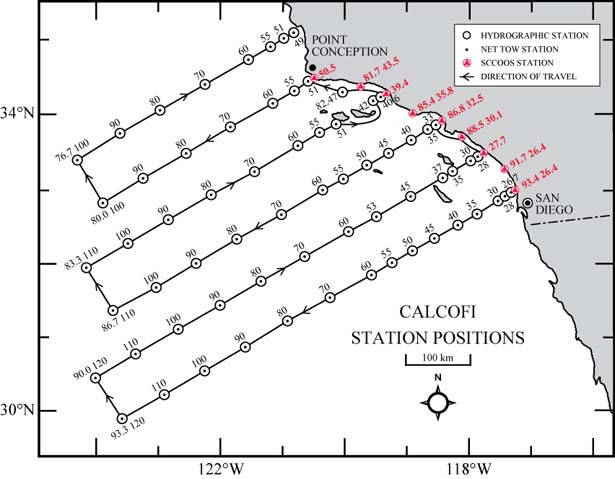The California Cooperative Oceanic Fisheries Investigations (CalCOFI) are a unique partnership of the California Department of Fish and Wildlife, the NOAA Fisheries Service and the Scripps Institution of Oceanography. The organization was formed in 1949 to study the ecological aspects of the collapse of the sardine populations off California. Today its focus has shifted to the study of the marine environment off the coast of California and the management of its living resources. The organization hosts an annual conference, publishes data reports and a scientific journal and maintains a publicly accessible data server (www.calcofi.com).
The Field Program

Since 1949, CalCOFI has organized cruises to measure the physical and chemical properties of the California Current System and census populations of organisms from phytoplankton to avifauna. This is the foremost observational oceanography program in the United States.
Currently, 18 to 28 day cruises are conducted quarterly - summer & fall cruises are typically 18 days, winter & spring cruises are longer. Scripps and NOAA provide equally in terms of ship time, personnel, and other cruise-related costs. On each cruise a grid of 75 stations off Southern California is occupied. Winter & spring cruise may occupy stations just north of Pt Conception up to Monterey or San Francisco. At each station a suite of physical and chemical measurements are made to characterize the environment and map the distribution and abundance of phytoplankton, zooplankton, fish eggs and larvae.
Core measurements
- temperature, salinity, oxygen, nutrients
- water masses and currents
- primary production
- phyto- and zooplankton biomass & biodiversity
- meteorological observations
- distribution and abundance of fish eggs & larvae
- marine birds & mammal census; marine mammal acoustic recordings
-
fisheries acoustics